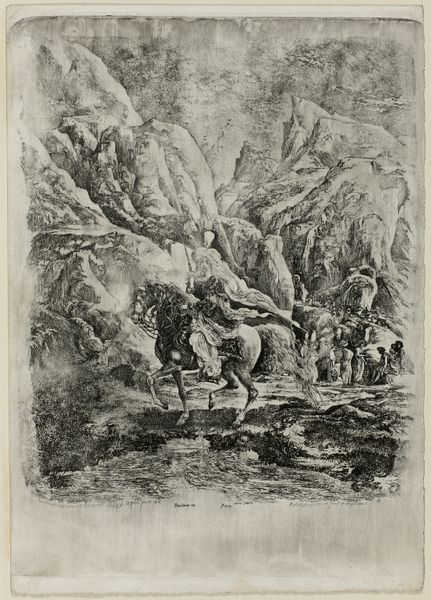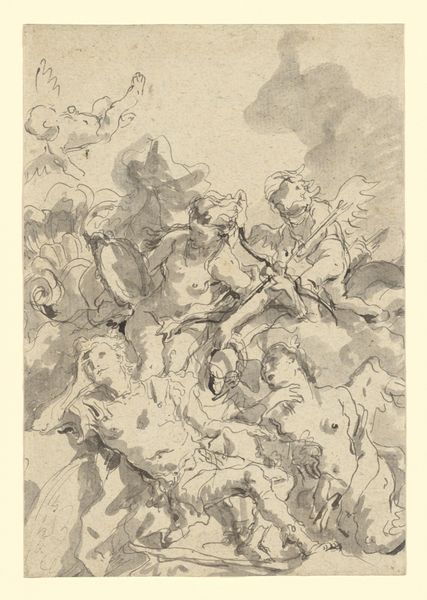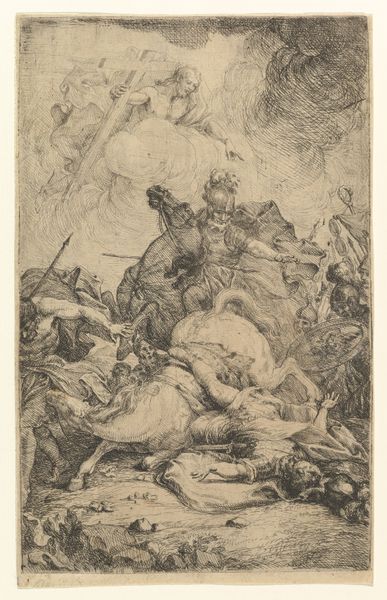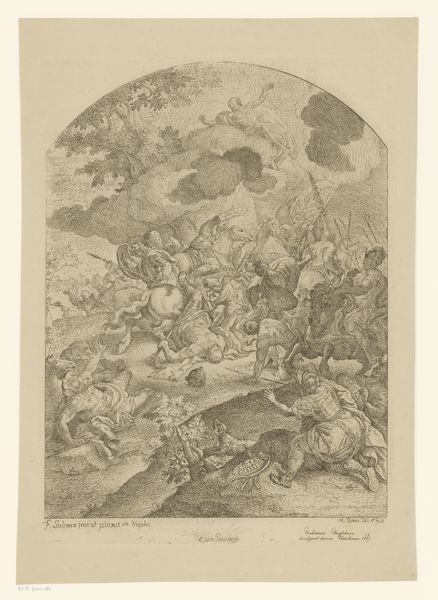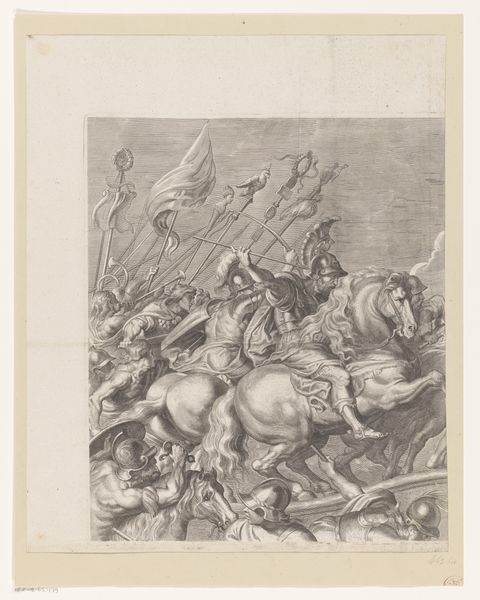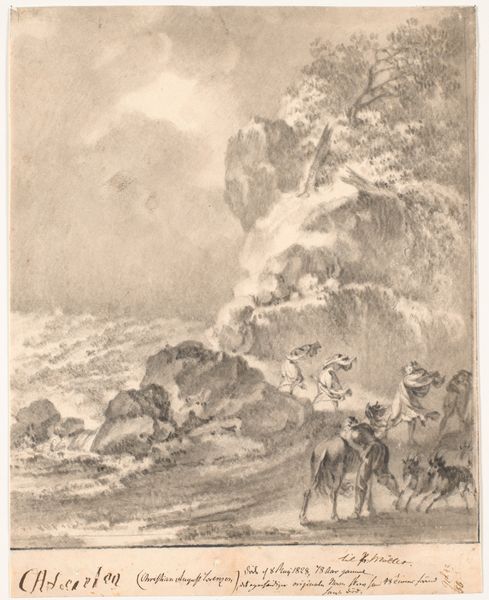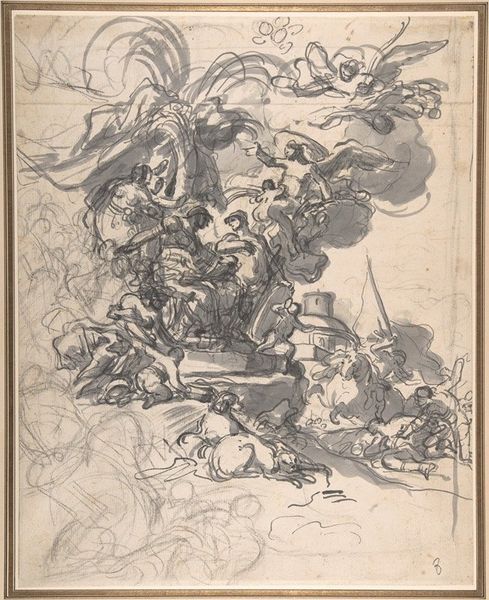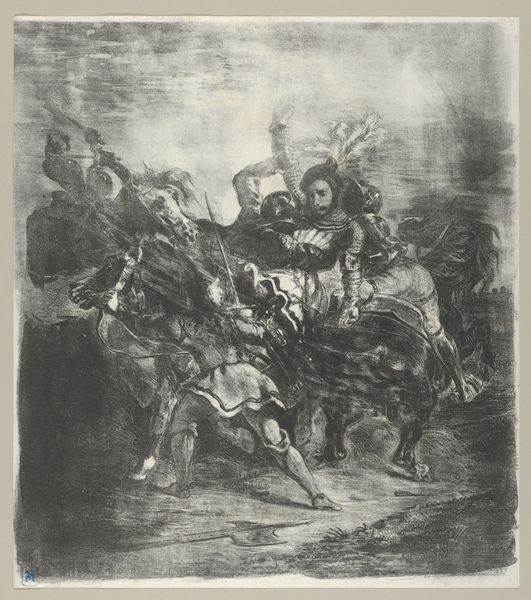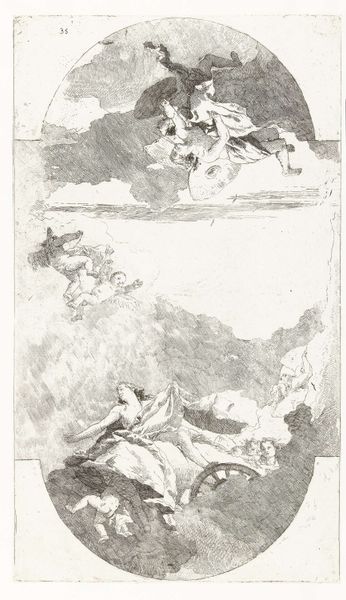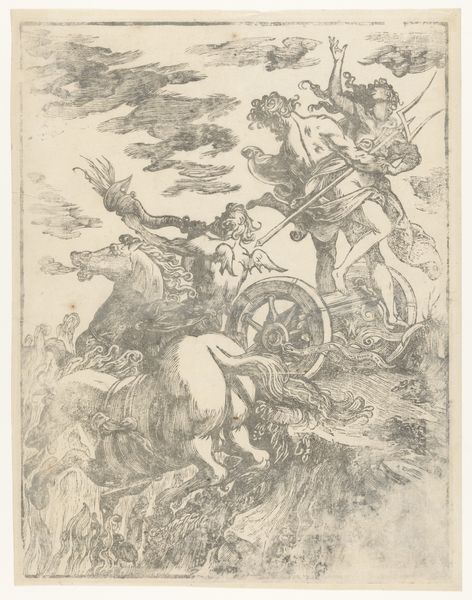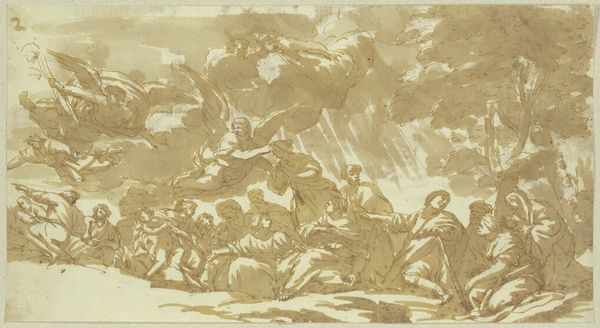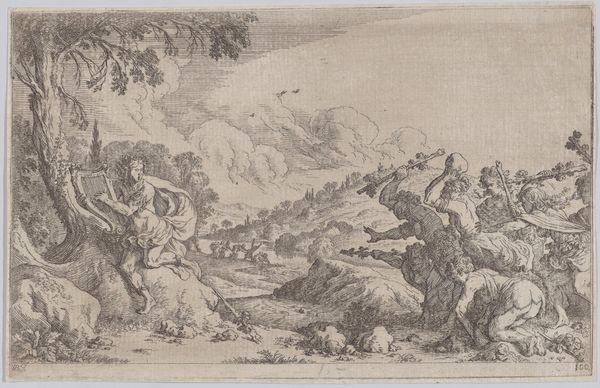
Dimensions: plate: 68.4 × 50.7 cm (26 15/16 × 19 15/16 in.) sheet: 71.2 × 54.3 cm (28 1/16 × 21 3/8 in.)
Copyright: National Gallery of Art: CC0 1.0
Giovanni Domenico Tiepolo created this print, "The Triumph of Hercules," in 18th-century Italy, a time when the aristocracy still dominated art. But there was also a growing fashion for celebrating the individual and his achievements, and the print embodies that culture. The image recalls the glories of the classical world, filtered through the lens of the Catholic Church. Here we see the pagan figure Hercules, symbol of strength and virtue, ascending to the heavens much like Christ after the Resurrection, accompanied by angels. This is an image of power, but what kind of power? Is it the power of an individual, or of the institutions that create and disseminate such images, or maybe the power of the Church? To understand the print better, we can study the history of Venice, the art market, and the Tiepolo family. Art history is not just about aesthetics but about understanding the social conditions that shape artistic production and interpretation.
Comments
No comments
Be the first to comment and join the conversation on the ultimate creative platform.
